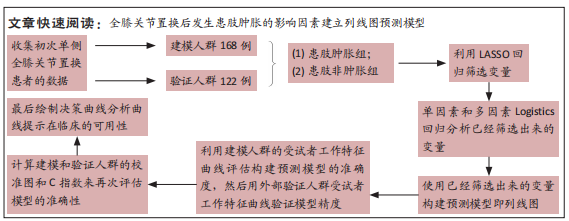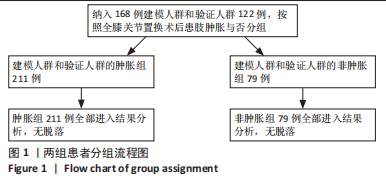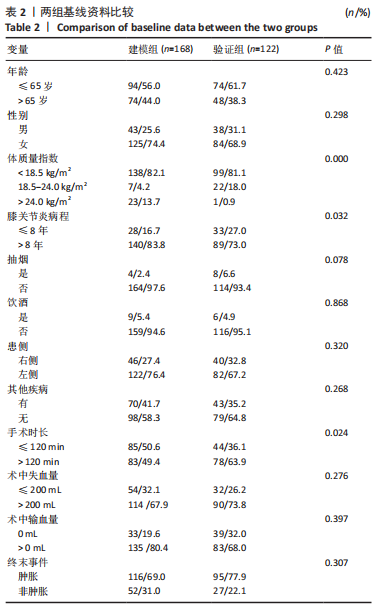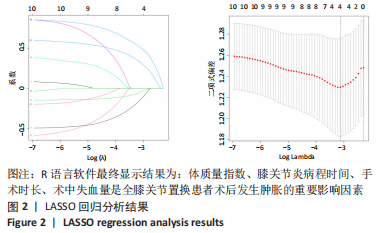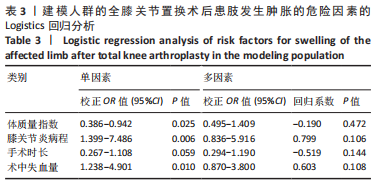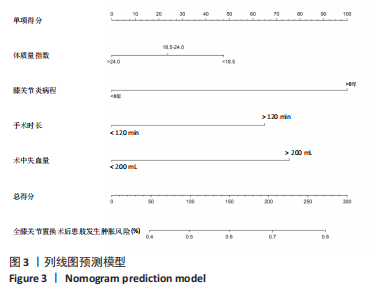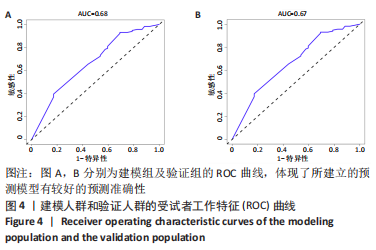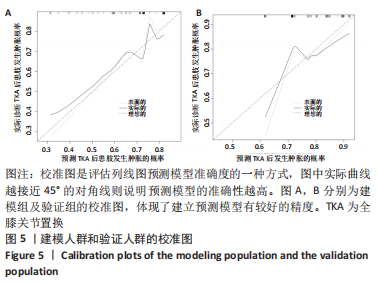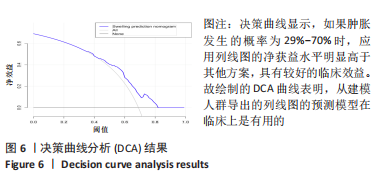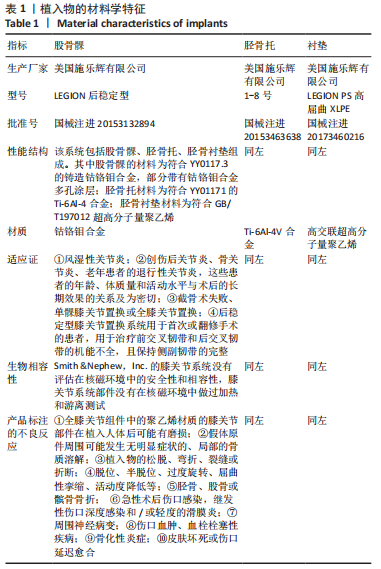[1] MISRA D, BOOTH SL, TOLSTYKH I, et al. Vitamin K deficiency is associated with incident knee osteoarthritis. Am J Med. 2013;126(3):243-248.
[2] KAYE AD, URMAN RD, CORNETT EM, et al. Enhanced recovery pathways in orthopedic surgery. J Anaesthesiol Clin Pharmacol. 2019;35(Suppl 1): S35-S39.
[3] CHAN JJ, CIRINO CM, HUANG HH, et al. Drain Use is Associated with Increased Odds of Blood Transfusion in Total Shoulder Arthroplasty: A Population-Based Study. Clin Orthop Relat Res. 2019;477(7):1700-1711.
[4] ZHANG Y, LIU H. Safety of Total Knee Arthroplasty in the Treatment of Knee Osteoarthritis and Its Effect on Postoperative Pain and Quality of Life of Patients. Contrast Media Mol Imaging. 2021;2021:6951578.
[5] 高福强, 李子剑, 张克, 等. 初次全膝关节置换术后肢体肿胀的影响因素研究. 中国矫形外科杂志,2011,19(9):724-727.
[6] SNYDER MA, SYMPSON AN, SCHEUERMAN CM, et al. Efficacy in Deep Vein Thrombosis Prevention With Extended Mechanical Compression Device Therapy and Prophylactic Aspirin Following Total Knee Arthroplasty: A Randomized Control Trial. J Arthroplasty. 2017;32(5):1478-1482.
[7] PICHONNAZ C, BASSIN JP, LÉCUREUX E, et al. Effect of Manual Lymphatic Drainage After Total Knee Arthroplasty: A Randomized Controlled Trial. Arch Phys Med Rehabil. 2016;97(5):674-682.
[8] LOYD BJ, KITTELSON AJ, FORSTER J, et al. Development of a reference chart to monitor postoperative swelling following total knee arthroplasty. Disabil Rehabil. 2020;42(12):1767-1774.
[9] HOWARD SB, KRISHNAGIRI S. The use of manual edema mobilization for the reduction of persistent edema in the upper limb. J Hand Ther. 2001; 14(4):291-301.
[10] VAIRO GL, MILLER SJ, MCBRIER NM, et al. Systematic review of efficacy for manual lymphatic drainage techniques in sports medicine and rehabilitation: an evidence-based practice approach. J Man Manip Ther. 2009;17(3):e80-89.
[11] PUA YH. The Time Course of Knee Swelling Post Total Knee Arthroplasty and Its Associations with Quadriceps Strength and Gait Speed. J Arthroplasty. 2015;30(7):1215-1219.
[12] RAHMANN AE, BRAUER SG, NITZ JC. A specific inpatient aquatic physiotherapy program improves strength after total hip or knee replacement surgery: a randomized controlled trial. Arch Phys Med Rehabil. 2009;90(5):745-755.
[13] RICE DA, MCNAIR PJ, LEWIS GN, et al. Quadriceps arthrogenic muscle inhibition: the effects of experimental knee joint effusion on motor cortex excitability. Arthritis Res Ther. 2014;16(6):502.
[14] TORRY MR, DECKER MJ, VIOLA RW, et al. Intra-articular knee joint effusion induces quadriceps avoidance gait patterns. Clin Biomech (Bristol, Avon). 2000;15(3):147-159.
[15] HOLM B, KRISTENSEN MT, BENCKE J, et al. Loss of knee-extension strength is related to knee swelling after total knee arthroplasty. Arch Phys Med Rehabil. 2010;91(11):1770-1776.
[16] CHRISTENSEN JC, KITTELSON AJ, LOYD BJ, et al. Characteristics of young and lower functioning patients following total knee arthroplasty: a retrospective study. BMC Musculoskelet Disord. 2019;20(1):483.
[17] GARRETT BR, WALTERS J. Knee pain, swelling and stiffness after total knee replacement: a survey of South African knee surgeons. SA Orthop J. 2010; 9(2):59-66.
[18] BROCK TM, SPROWSON AP, MULLER S, et al. Short-stretch inelastic compression bandage in knee swelling following total knee arthroplasty study (STICKS): study protocol for a randomised controlled feasibility study. Trials. 2015;16:87.
[19] MILLER TE, THACKER JK, WHITE WD, et al. Reduced length of hospital stay in colorectal surgery after implementation of an enhanced recovery protocol. Anesth Analg. 2014;118(5):1052-1061.
[20] LAU RL, GANDHI R, MAHOMED S, et al. Patient satisfaction after total knee and hip arthroplasty. Clin Geriatr Med. 2012;28(3):349-365.
[21] HARADA T, HAMAI S, SHIOMOTO K, et al. Analysis of Factors That Influence Patient Satisfaction After Periacetabular Osteotomy: An Asian Cohort Study. Orthopedics. 2022;45(5):297-303.
[22] IASONOS A, SCHRAG D, RAJ GV, et al. How to build and interpret a nomogram for cancer prognosis. J Clin Oncol. 2008;26(8):1364-1370.
[23] BALACHANDRAN VP, GONEN M, SMITH JJ, et al. Nomograms in oncology: more than meets the eye. Lancet Oncol. 2015;16(4):e173-180.
[24] 马骏, 李国庆, 曹力. 全膝关节置换术中不同压力止血带对术后肿胀及疼痛影响的临床研究[J]. 中国矫形外科杂志,2013,21(13):1297-1301.
[25] PINSORNSAK P, PINITCHANON P, BOONTANAPIBUL K. Effect of Different Tourniquet Pressure on Postoperative Pain and Complications After Total Knee Arthroplasty: A Prospective, Randomized Controlled Trial. J Arthroplasty. 2021;36(5):1638-1644.
[26] 陈洁, 田义华, 唐永利, 等. 全膝关节置换术后患肢不同体位对肢体肿胀与关节活动度的影响[J]. 重庆医科大学学报,2020,45(10):1506-1508.
[27] ZHANG YM, LIU JY, SUN XD, et al. Rivaroxaban improves hidden blood loss, blood transfusion rate and reduces swelling of the knee joint in knee osteoarthritis patients after total knee replacement. Medicine (Baltimore). 2018;97(40):e12630.
[28] 高福强, 李子剑, 刘延青, 等. 初次全膝关节置换术后肢体肿胀程度与隐性失血量的相关性研究[J]. 中国矫形外科杂志,2011,19(3):199-202.
[29] HAŁAS I. Kinesiology Taping–metoda wspomagająca terapię tkanek miękkich. Prak Fizjoter Reh. 2010;9(10):22-25.
[30] WILLIAMS S, WHATMAN C, HUME PA, et al. Kinesio taping in treatment and prevention of sports injuries: a meta-analysis of the evidence for its effectiveness. Sports Med. 2012;42(2):153-164.
|
